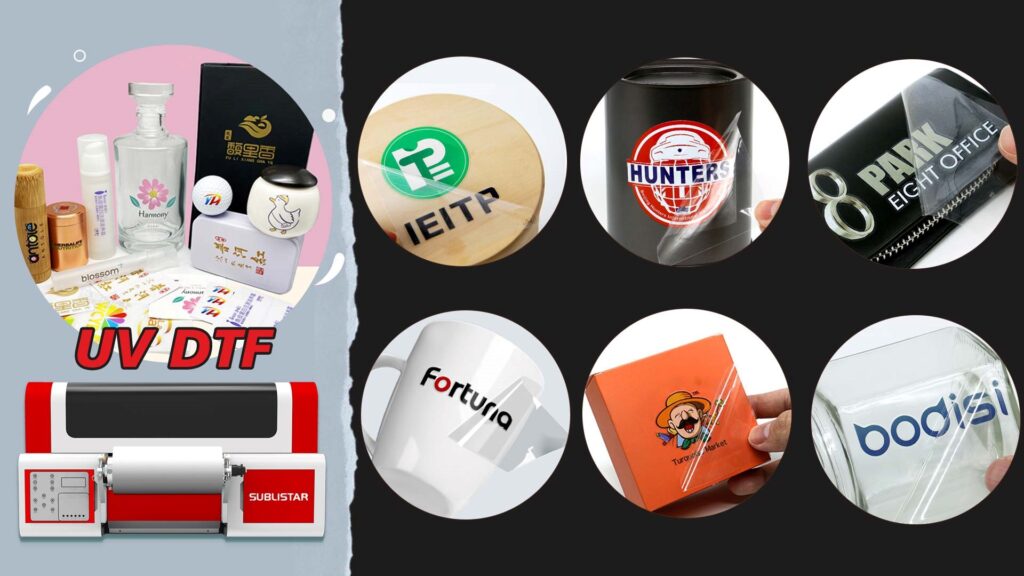
UV printing on acrylic is a digital printing technique that uses ultraviolet light to cure inks, producing colorful, long-lasting prints on an extremely durable material.
Acrylic, also known as plexiglass, is an organic compound with a high transmission of light of more than 92%, a glassy appearance, and resistance to impact, water, and UV light, which makes it excellent for outdoor implementation.
When UV printing is used, the images that are produced are extremely resistant to fading and wear.
Besides of the exceptional resolution that UV printing on acrylic offers, it also has many other advantages like durability, visual appeal, versatility and much more.
Therefore it is frequently used to make various forms of signs, branding logos, glass alternatives, displays, packaging, retail displays, advertising materials, and many other marketing products.
UV Printing on Acrylic – Tips and Tricks
Sometimes an error may appear in the printing process as a result of the operator’s carelessness on the machine or due to some other factors.
So, in order to reduce errors and reduce production costs, first of all, it is necessary to avoid printing errors as much as possible.
On the other hand, if an error appears, it is necessary to solve the problem according to the methods described below.

What to Look for When UV Printing on Acrylic
- While the UV printer is in the working phase, do not turn it off or turn off the power supply.
UV printing is digital printing, controlled by a computer, so a power outage will interrupt the printing process.
- The surface of acrylic is smooth, and if there is dust in the air surrounding UV printer, it can easily accumulates on the surface of the material.
This will cause the pattern to be exposed to dust and some colors can be missed.
- During UV printing, the height of the nozzle and the acrylic should be well adjusted.
If the nozzle is too high or too close to the acrylic material, the printed image will be blurred or double.
- Before UV printing, it is good to apply one layer of UV primer to the acrylic printing surface.
This primer is a transparent coating that is applied to printed materials just before printing with ink.
It can make your printed products stand out by intensifying ink colors and offering long-term protection against scratches, tears, and dirt.
UV Pretreatment Solution when Printing UV on Acrylic
If the substrate is acrylic, the surface must be pre-treated before printing with coating liquid.
As a result UV ink will adhere more firmly to the smooth surface, will have better performance and color fastness.
If you print directly on some smooth non-absorbent substrates, the final print quality will be poor, but it will be perfect after the coating process.
Regardless of whether the printed piece is bent, folded or placed for a long time, there will be no cracks on the surface.

The coating liquid is made of a special chemical component.
It can dry within 3 minutes after spraying, especially on smooth materials.
After pretreatment, the ink has a superior contact with the materials, and the finished print is far more wear-resistant and waterproof than a print without pretreatment.
Screen Print Problems – How to Resolve them
The use of acrylic materials is very widespread in everyday life.
Accordingly, printing on acrylic materials has a great momentum due to the quality and visual appearance obtained on this material.

Below are some of the identified problems that you are likely to encounter when printing on acrylic.
Color bleeding
This happens when the pigment is loose.
During printing, with each registration, the printing ink will spill over the surrounding areas of the acrylic image.
This spoils the printed image.
The remedy for this problem is to make the paint as thick as possible to the extent that it sticks to the acrylic.
Also, be sure to clean the lower part of the screen at each registration.
Unequal spaces left between repetitions
Sometimes design repeats don’t come together as they should.
So you need to make sure that you have calculated the screen registration correctly.
You also need to check the repeats just before you start printing.
Incorrect screen position
This is what happens when you don’t check for repetitions.
Therefore, you must check the repetitions before setting the print registration screen.
Creating color spots
This happens when the ink is not evenly distributed on the acrylic.
The remedy is to use enough ink and properly drag the squeegee across the image.
The acrylic panel sticks to the screen
This is common and causes difficulty in extraction.
Do not press the screen so hard on the acrylic plate. Just stick the mask on the edges and slowly run the squeegee across the screen.